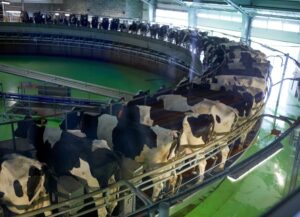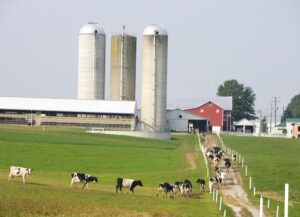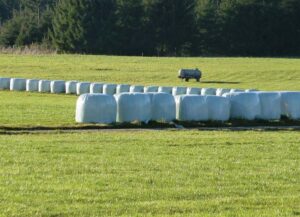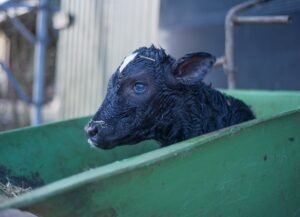Lucas Pantaleon
Mycoplasma bovis (M. bovis) is a pathogen with global distribution having negative economic impact due to its ability to cause mastitis, arthritis and pneumonia in adult cattle. Infected milk can be a source of infection for young calves and their clinical manifestation of disease are otitis media, pneumonia and arthritis. Other sources of infection are via direct contact, herd workers and fomites.
Replacement heifers that are exposed to M. bovis as calves could be at risk of developing disease and transmitting the pathogen to susceptible animals in the herd. However, there is a lack of information in the literature about these risks and the duration of shedding from infected calves as they mature.
It is important to understand the prevalence of M. bovis in exposed replacement heifers over time for risk assessment of replacement heifer.
In order to develop sampling protocols for replacement heifer’s purchases, understanding the prevalence of this pathogen in different anatomical sites is key. Serology testing could also be an additional diagnostic tool to identify M. bovis carriers or high risk heifers, although the literature suggest that antibody response is short lived.
Researchers (Hazelton et al., 2020) designed a 2 year longitudinal study that involved 450 heifer calves reared to weaning in 8 herds. Within each herd the same management practices were applied to all heifer calves until weaning. Seven of the herds were infected with clinical disease and one herd was free of M. bovis. After weaning heifers were commingled and managed with non-study heifers at a single rearing grazing area.
Swabs for culture were obtained from the nose, conjunctiva and vagina at weaning, prebreeding, precalving and 1 month after calving. The same time points were used to collect blood for serological testing of Mycoplasma spp. via ELISA. Furthermore at calving a colostrum sample was obtained and 1 month post calving a composite milk sample was collected, these samples were used for Mycoplasma spp. culture.
Seroprevalence of Mycoplasma bovis in replacement dairy heifers
Researchers in this study found that the seroprevalence of M. bovis for clinically affected heifers was high (72%); interestingly M. bovis culture only yielded positives results in 4% of the of the same heifers. Samples from the nasal cavity yielded the highest number of positive culture results (74%), indicating that this was the predominant colonization site for M. bovis.
Only one heifer from the infected herd was cultured positive from the nose at different time points. Thus, indicating that even though rare, long term M. bovis carrier state in replacement heifers is possible.
As expected, the M. bovis seroprevalence in the uninfected herd was low (2%) and culture results were all negative. Additionally, from weaning to the end of the study period, clinical disease was not detected in any heifer.
What is the risk of colonization of the pathogen in replacement heifers?
The results of this study revealed that for each replacement heifer from groups in herds with M. bovis clinical disease in the milking group and exposed to M. bovis preweaning, the risk of colonization after their first calving is low but not zero. If herds are looking to expand, purchases of 50 or more replacement heifers from herds with M. bovis clinical disease into the milking group at the time the heifers were calves, presented a non-trivial risk for introducing the pathogen into the herd. An important preventative measure is to know the source herd’s M. bovis status before purchasing replacements.
Designing proper biosecurity protocols in order to prevent the introduction of this pathogen when purchasing replacement heifers could be challenging. Detection of nasal colonization by M. bovis of a single heifer at weaning, prebreeding and postcalving is important if an eradication plan is to be instituted at the herd and or country levels. However, in this study M. bovis nasal prevalence was highest at weaning and very low after.
When to use the ELISA kit in heifers?
The serological results from this study, suggest that if the ELISA was used to detect replacement heifer groups that have been exposed to M. bovis as calves, it would be most sensitive at a group level if heifers are tested at weaning.
Due to the low seroprevalence at precalving, it was not recommended by the investigators to use the ELISA kit used as a tool for prepurchase assessment of replacement heifers groups precalving for evidence of exposure to M. bovis as calves.
Other newer ELISA tests with improved sensitivity and specificity might be more valuable. This study showed that in the absence of re-exposure, antibodies in the majority of the seropositive heifers at weaning do not persist beyond 9 months.
Conclusion
Results of this study suggest that it is difficult to accurately determine the herd of origin M. bovis exposure history of replacement heifers using nasal, conjunctival, and vaginal swabs for Mycoplasma culture and the ELISA kit utilized for assessing seroprevalence in the current study. Furthermore it is important to keep in mind that other Mycoplasma spp. can colonize the same anatomical site tested here, further complicating the diagnosis.
Reference
Hazelton, Mark & Morton, John & Parker, Alysia & Bosward, Katrina & Sheehy, Paul & Dwyer, C.J. & Niven, P.G. & House, John. (2020). Mycoplasma bovis and other Mollicutes in replacement dairy heifers from Mycoplasma bovis-infected and uninfected herds: A 2-year longitudinal study. Journal of Dairy Science. 113. 10.3168/jds.2020-18921.
© 2021 Dellait Dairy Knowledge Center. All Rights Reserved.









